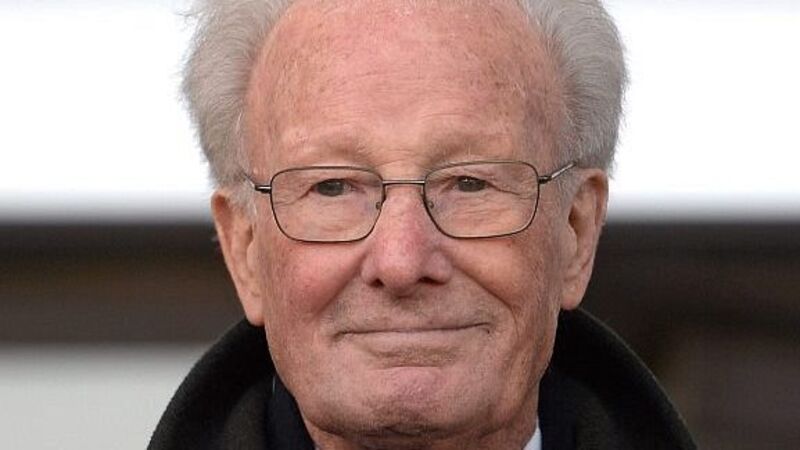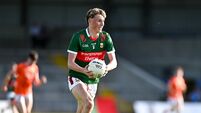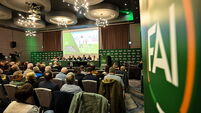A sporting life taken before time

Jack Kyle had the kind of life that seemed to conform to the template we imagine for our sporting heroes.
Kyle’s successful years of classy endeavour on the rugby field as an out-half segued seamlessly into a lengthy professional career afterwards as a doctor, much of it spent in humanitarian work.
He passed away at 88 years of age, having lived long enough to see his Grand Slam side succeeded by the team of 2009.
In appearance, Kyle remained the picture of elegance deep into his ninth decade: witness the photograph of him congratulating Brian O’Driscoll in the immediate aftermath of Ireland’s Triple Crown win five years ago, rocking the high-collared overcoat look, hair swept back from the forehead.
The passing of cricketer Phillip Hughes could hardly be in sharper contrast with Kyle’s.
For instance, Kyle’s long career in the green of Ireland lives on in a few flickering newsreels. However, the fatal moment for 25-year-old cricketer Hughes, when a ball reared up to catch him on the back of the neck last Wednesday, is known to millions.
Within minutes of occurring, the footage of Hughes, uncertain on his feet, then falling, was around the world, though it hardly prepared anyone for the news of his death the next day.
It may console his family in years to come to recall the shock and grief in response to his death, and the way people reacted. The simple tribute of a fan in Australia, who leaned his cricket bats on his front door, was quickly copied all over the world, even being replicated at Croke Park with hurleys on the statue of GAA founder Michael Cusack (a cricket player himself, rightly pointed out by cricket historian Ger Siggins on Twitter).
The passing of a young sports person is always jarring; it’s news that flatly contradicts our image of such athletes, our mental picture of energy and health and enthusiasm, clean jawlines and trim torsos, the prerogatives of youth.
Does it seem more shocking that it was a cricketer, the game that epitomises languid summer, rather than one of the more gladiatorial sports? All rhetoric now, of course.
The poet Housman knew cricket well. One of his better-known poems might have been written for Hughes:
Of lads that wore their honours out,
Runners whom renown outran
And the name died before the man.
And round that early-laurelled head
Will flock to gaze the strengthless dead,
And find unwithered on its curls
I suppose you can’t really write a sports column in this country, in this week, without some reference to the merriment afforded us all by John Delaney’s latest antics.
Don’t worry, we won’t go back through this with a fine tooth comb, more a kind of a semi-functional wire brush you’d find in with the worm tablets under the dog’s basket.
But it does seem a little strange that with all the PR advice and marketing know-how available to everyone at all times, nobody thought of the most obvious retort to early inquiries about this video of the FAI man singing.
“Yeah, that’s me. So?”
Perhaps it’s not so strange after all: the need to strategise and anticipate how errors and gaffes are perceived 24, 48 or 72 hours after they break means that the obvious is often overlooked, clearly.
The heavy-handed and ham-fisted legal threats which were issued to various media outlets last week were immensely helpful to those same outlets, and others, as they helped to generate a far better and more substantive story.
The issue of whether Delaney’s behaviour was unseemly in a man in his position is neither here nor there; it may come as a surprise to some but this observer, and I suspect many others, doesn’t regard singing songs in a pub as a hanging matter, with apologies if hanging matters figure in any of those same songs.
Mind you, issuing legal threats which have to be embarrassingly decommissioned soon afterwards?
That does seem an offence most judges would don a black cap for.
Interesting, based on our call for common sense last week after Ireland’s win over Australia (did anyone — anyone? — listen?), to see a couple of comments from Martin Corry during the week.
The former England rugby captain was talking about the current men in white, and the fact that they were going through something of a crisis.
England had lost five on the trot before beating Samoa the weekend before last, so getting victory over Australia on Saturday was vital.
But what was interesting was Corry’s view, which was focused on the World Cup rather than the games which are a few weeks away: “What’s clear is that there’s Six Nations good and there’s best in the world good.”
The clear implication was that these November internationals and the springtime tournament are there to prepare a team for the World Cup — and that even now, a year away, England’s run of poor results was an ominous sign for the 2015 race for the Webb Ellis Cup.
Does that reinforce the point about keeping things in perspective for Ireland as much as England?
The hype was tidal about Ireland’s World Cup chances last week: that’s November 2014 for a tournament a year away.
Or can we flip Corry’s message around and look on ourselves as favourites?
God be with the days yours truly worked in the Dáil, and was buttonholed by a Minister after ordering a plain scone.
“You’re from Cork? One of my favourite counties. Along with Kerry. And Dublin. And the west coast, of course. And the North . . .”
I am far more discerning, but the fine people of the Premier County are always close to my heart. I was intrigued, then, to see that Nenagh will shortly see the publication of a GAA history.
If you’re a bit of a . . . nerd, like me, then the prospect of a club history makes you drool slightly, but kudos to Nenagh for being more ambitious.
They’re not publishing a club history this week, but the opening volumes of a more voluminous project, entitled: “A Central Culture – Gaelic Sport in Nenagh”.
This will be launched on December 7 by GAA president Liam O’Neill and it sounds as though authors Donal A Murphy, PJ Maxwell and Nancy Murphy have done a terrific job.
For instance, the book contends there were 13 rather than seven people present to found the GAA in Hayes’s Hotel in 1884.
* More information at www.nenagheireog.com/index











